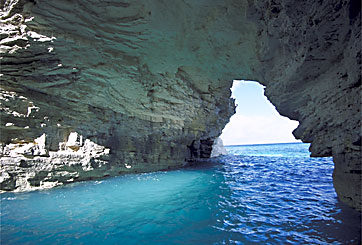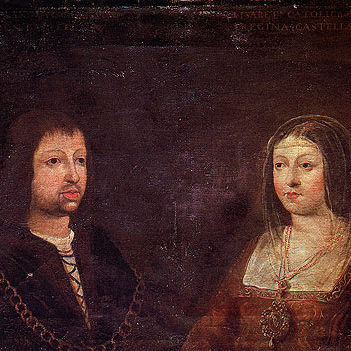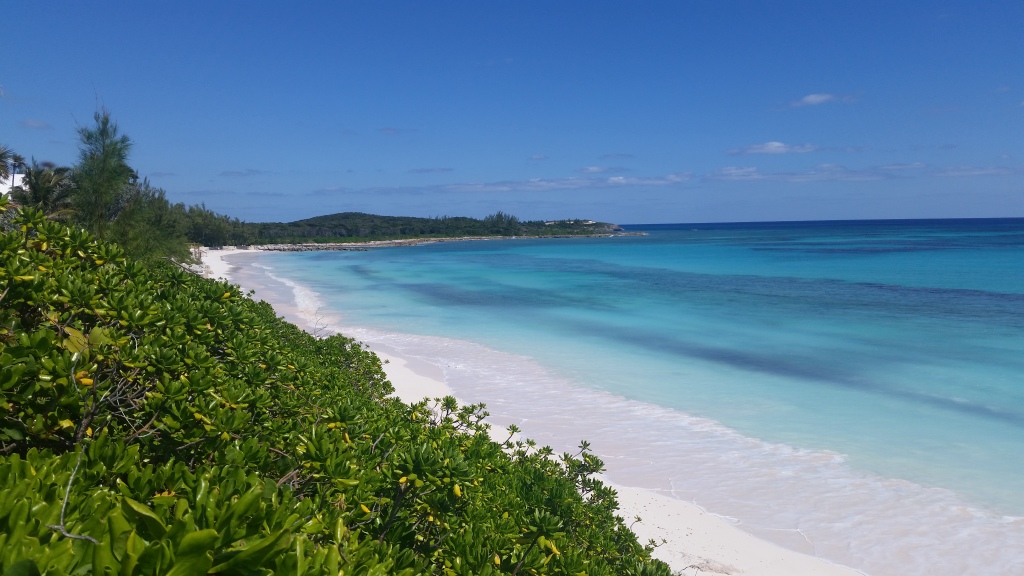The Old World Meets the new world

Before Spanish explorers arrived in the New World, the indigenous Lucayan people basked in a fairly tranquil existence, living in harmony with their natural environment and in relative peace with each other on these verdant lands.
Physically separated from their homelands in Hispañiola and Cuba for hundreds of years, the Lucayans evolved into a distinct community of resourceful craftspeople who organized their trade routes, grew cassava and cotton, and formed their own government. Like the Tainos, the Lucayans spoke a variant of the Arawakan language.
Sadly, their ideas of a peaceful existence came to an abrupt end not long after welcoming Christopher Columbus to their shores. Columbus was an Italian explorer who, unlike his contemporaries, devised a plan to reach the gold and spices of the Far East by sailing west across the Atlantic Ocean from Spain. For Columbus, the Atlantic crossing was a worthwhile venture compared to the excessive time, costs, and hazards of crossing the overland Silk Road that was under Arab control.
Furthermore, the sea route to the East Indies from the south coast of Africa was unknown to European explorers at the time. Columbus’ plan was eventually accepted and funded by King Ferdinand and Queen Isabella of Spain in 1492, after several years in search of financing from the European Crowns of England, Portugal, and Spain.
The year 1492 was a time of quests and conquests for Spain. It was the year that the Spanish monarchs drove out the last invading armies of the North African Muslim Moors from the Iberian Peninsula to regain control of Spain after 700 years of Muslim occupation. 1492 also marked the closing chapter of the Middle Ages (or the Medieval period)—the period that immediately preceded the Modern Age, which commenced around 1500. The year 1492 was also the year when Columbus set sail for the East Indies.
As part of the royal agreement, Columbus was granted the title Admiral of the Ocean Sea along with a share of any wealth he discovered. Columbus’ mission also included the Christianizing of the peoples of the Indies. Almost seventy days after departing the port of Palos in southwest Spain, Columbus’ expeditionary vessels (the Niña, Pinta, and the flagship, Santa Maria) made their first landfall in the Americas on a tiny island in the Lucayan chain on 12 October 1492.
Upon making landfall, Columbus was greeted by the peaceful Lucayans. The Italian navigator then claimed the island for the Catholic monarchs of Spain, who sponsored his expedition. Columbus also renamed the island of his historic landfall San Salvador—Spanish for Holy Savior (in reference to Jesus Christ, who according to Biblical text is the Prince of Peace). The island’s original Lucayan name was ‘Guanahani’ meaning ‘Place of the Iguana.’
While at San Salvador, Columbus noted that the Lucayans would make “good servants” and that these indigenous people were “very unskilled in arms.” Columbus’ initial actions in claiming the land for the Spanish Crown and his assessment of the Lucayan vulnerabilities represented the first seeds of slavery to be planted in the minds of European explorers, thereby foreshadowing the demise of the Lucayan people.

